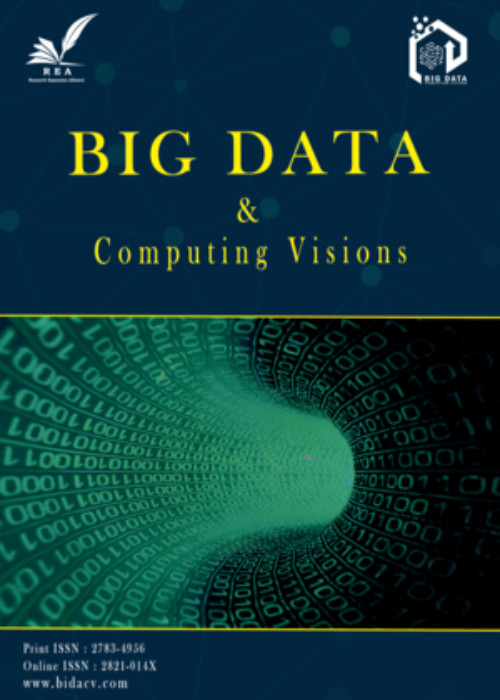فهرست مطالب
Big Data Analysis and Computing Visions
Volume:2 Issue: 2, Jun 2022
- تاریخ انتشار: 1401/03/11
- تعداد عناوین: 6
-
Pages 61-68Public-Private Partnership (PPP) refers to a partnership between a government and a private sector to provide public infrastructure projects, services, etc. These projects have been associated with numerous problems, many of which failed. A critical issue in PPP projects is choosing the right private-sector partner. Considering various criteria, the public sector has to select the best alternative concerning uncertainty. There needs to be a focus on well-structured, feasible decision approaches necessary to improve the performance of PPPs. In the MCDM context, the ratings of the alternatives provided by decision-makers can be expressed with the Fuzzy Set theory. Single-valued neutrosophic sets SVNSs are well suited for handling ambiguous, incomplete, and imprecise information. Moreover, some information measures for the SVNS model have been proposed, such as similarity measures. As selecting the suitable private-sector partner problem is an MCDM one, including various risk factors and uncertainty, this article has addressed choosing that by considering the risk factors as the problem criteria in a neutrosophic environment. We proposed a simple, practical approach to solve the problem of selecting the best private-sector partner. This approach considers the most critical risk factors affecting the infrastructure PPP project and copes with uncertainty using SVNSs.Keywords: public-private partnership, neutrosophic sets, SVNS, Decision-making, similarity measure
-
Pages 69-79Supplier selection is the practice of evaluating and selecting the best or most suitable supplier for the organization based on the candidates' qualities and qualifications. In large construction projects, supplier selection strongly impacts the quality of materials as well as the cash-flow and logistical support of the project. The issue becomes particularly important when a high number and volume of orders and a varied set of items are involved. If the procurement process is organized into several periods, the impact of Net Present Value (NPV) on the project's overall profit or loss becomes significant, as well. In this study, the solution to a multi-product multi-period supplier selection optimization problem is evaluated using a hybrid metaheuristic algorithm and considering the cash flow. Our analysis of the results shows that the algorithm is able to obtain the intended outcome within an appropriate timeframe and with high precision.Keywords: optimization, Supplier selection, Metaheuristic Algorithm, Net Present Value
-
Pages 80-89In most real-world issues, we are dealing with situations where accurate data and complete information are not available. One way to deal with these uncertainties in real life is to use Grey System Theory (GST). In this paper, a linear programing problem in a grey environment with interval Grey Numbers (GN) is considered. Most of the proposed methods for solving grey linear programing problems are done by using GN whitening and turning the problem into a common linear programing problem. However, in this paper we seek to solve the grey linear programing problem directly without turning it into a regular linear programing problem in order to maintain uncertainty in the original problem data in the final answer. For this purpose, by proving the desired theorems, we propose a method based on the initial simplex algorithm to solve grey linear programing problems. This method is simpler than the previous methods. We emphasize that the proposed concept is useful for real and practical situations. To illustrate the efficiency of the method, we solve an example of Grey Linear Programming (GLP).Keywords: Uncertainty, Grey interval numbers, Grey linear programming
-
Pages 90-94Wireless sensor networks are fast process of connection in part such as agriculture, healthcare, environmental monitoring, security, and manufacturing and also it thesaurus and measure physical signals and it also have wireless communication. Wireless sensors also can track the appliances; it is an automatic control of devices. It works as an investigation of types and application of wireless sensors in the ground and home. In this paper we have presented sort study on WSN applications.Keywords: Wireless sensor, Networks, Smart home appliances
-
Pages 95-100Parking and transportation becoming crucial from decades, the accidents per day around the world are increasing, so with sensors we can drastically decrease the death rate and accident rate around the world. In this paper I suppose to present you the sensors-based cloud smart parking and sensors-based AI and ML smart transportation.Keywords: Artificial intelligence, Machine Learning, object detection model
-
Pages 101-106Wireless Sensor Networks (WSNs) consist of small nodes with identifying component by sensing, computation, and wireless communications infrastructure capabilities. The path searching means routing, power management, and data dissemination protocols have been specifically designed for WSNs where energy awareness is an essential design issue. Routing protocols in WSNs might differ depending on the application and network architecture. WSN provide several types of applications providing comfortable and smart-economic life. The easy molding, fault tolerance, high sensing fidelity, low price, and rapid deployment features of sensor networks create various new and thrilling application areas for remote sensing. In future, this wide range of application areas will make sensor networks an important part of our lives. However, understanding of sensor networks needs to satisfy the constraints presented by factors such as fault tolerance, scalability, cost, hardware, dynamic topology, environment, and power consumption.Keywords: Topology, Wireless Sensor Network, fault tolerance


